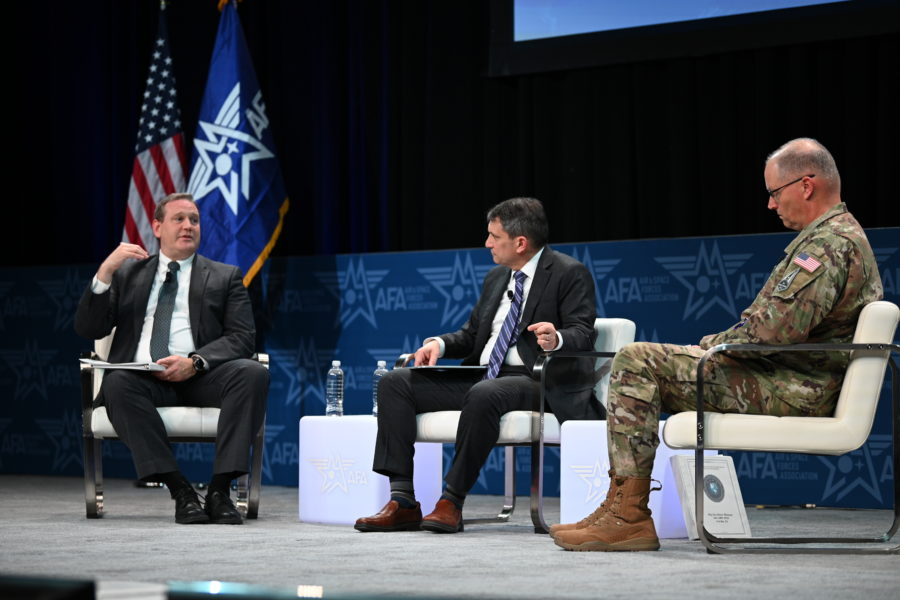AURORA, Colo.—What if the Air and Space Forces could create their own dream teams of contractors for major programs instead of leaving it to prime contractors to assemble teams on their own? The Air Force is looking at ways to achieve that effect and generate more competition, said Air Force acquisition executive Andrew Hunter.
Speaking March 7 at the AFA Warfare Symposium, Hunter said the department has used “vendor pools” with classified programs sees it as a valuable tool for stimulating competition in the defense industrial base throughout the life of a program.
“So you don’t get into this sort of high stakes [decade-long] competition, where all the mission systems are defined early on, they’re aligned with a prime and then they’re sort of locked to that team, and everyone else is locked on another team,” Hunter said. Once teams are formed, he added, ““And then those locks, “We can’t unlock them as we go on, and we can’t come back later and say, ‘Well, OK, it turns out that the key mission system is something that I was doing a little work on, but I didn’t necessarily have it prioritized exactly right when we did the first chalk line.’”
Creating “relatively broad vendor pools” gives the Air Force flexibility to seek alternative solutions from industry with relative ease. As an unclassified example of the approach, Hunter cited the Next Generation Air refueling System (NGAS), the service’s new tanker program.
“Having a vendor pool, a wide variety of providers, working with them as we go through an analysis of alternatives for NGAS, so that we understand what’s really out there,” Hunter said. “How do these things—mission systems, airframes—in a family of systems approach, actually come together and work together to create an integrated capability that’s going to meet the needs of the joint force?”
By separating those pieces, the Air Force could, in effect, assemble its own dream team. Hunter took the sporting analogy further: “And it’s continuous, right? No one is ever out of the game,” he said. :They always have an opportunity of that next shot, to be in the game.”
Air Force acquisition programs applied similar approaches in broad awards for JADC2 and the Next Generation Adaptive Propulsion program. But Hunter said there are limits to its appeal.
“Obviously, we’re still talking about contracts here,” he said. “So there is a process of when it comes to formulating a vendor pool: You have to go out ,and people have to provide offerings and explain why they have something they bring to the table that’s worth having, that’s relevant to the game. And then you source select,” Hunter said.
“But it’s not one and done, right? You can select additional providers from the vendor pool over time, so you’re never closing the opportunity to findsomeone who has something you need that wasn’t on the team before.”
The Space Force’s approach to satellite acquisition has similarly spread risk by awarding tranches of satellites to different vendors for the Space Development Agency’s proliferated constellation of low-Earth orbit satellites, said Maj. Gen. Steve Whitney, the military deputy to the Assistant Secretary of the Air Force for Space Acquisition and Integration.
“We’re seeing awards for satellites being given to multiple contractors in each tranche and each epoch,” Whitney said. “We want to be very clear with industry that … we don’t want to take anybody out…. We want to make sure that we’re really clear here where we’re going.”
